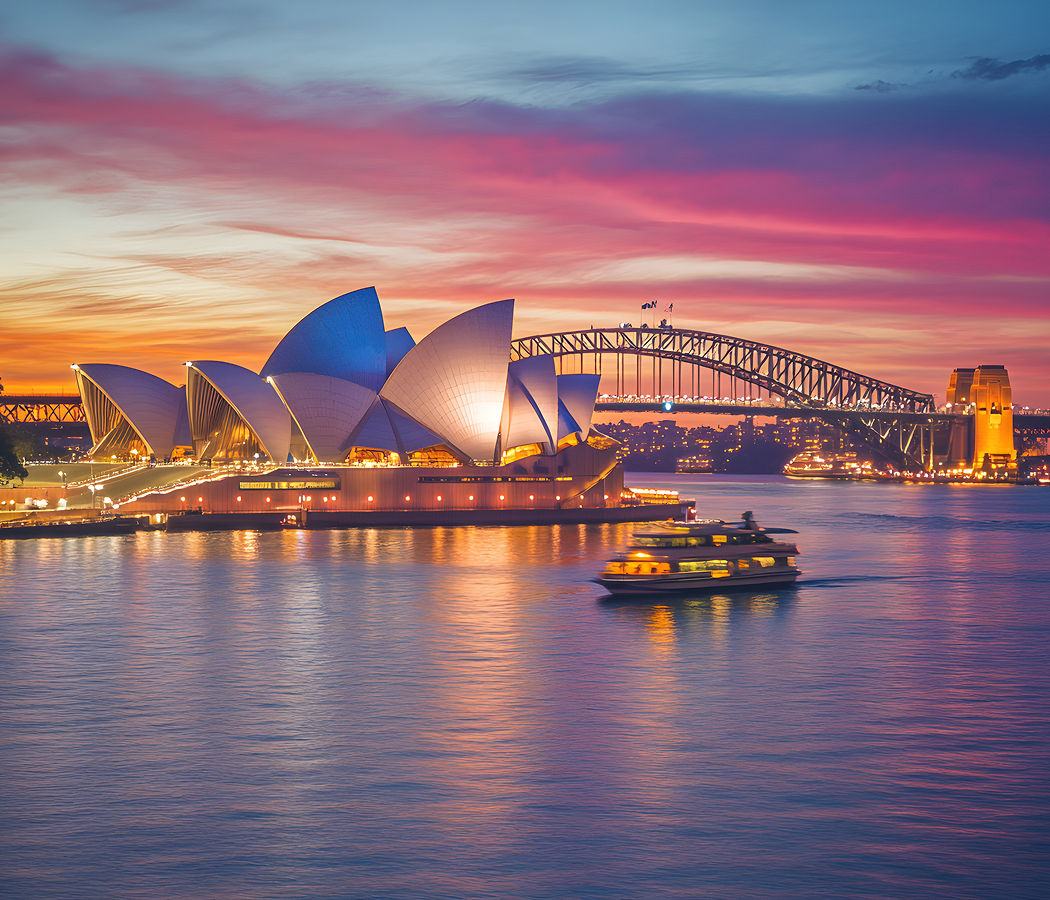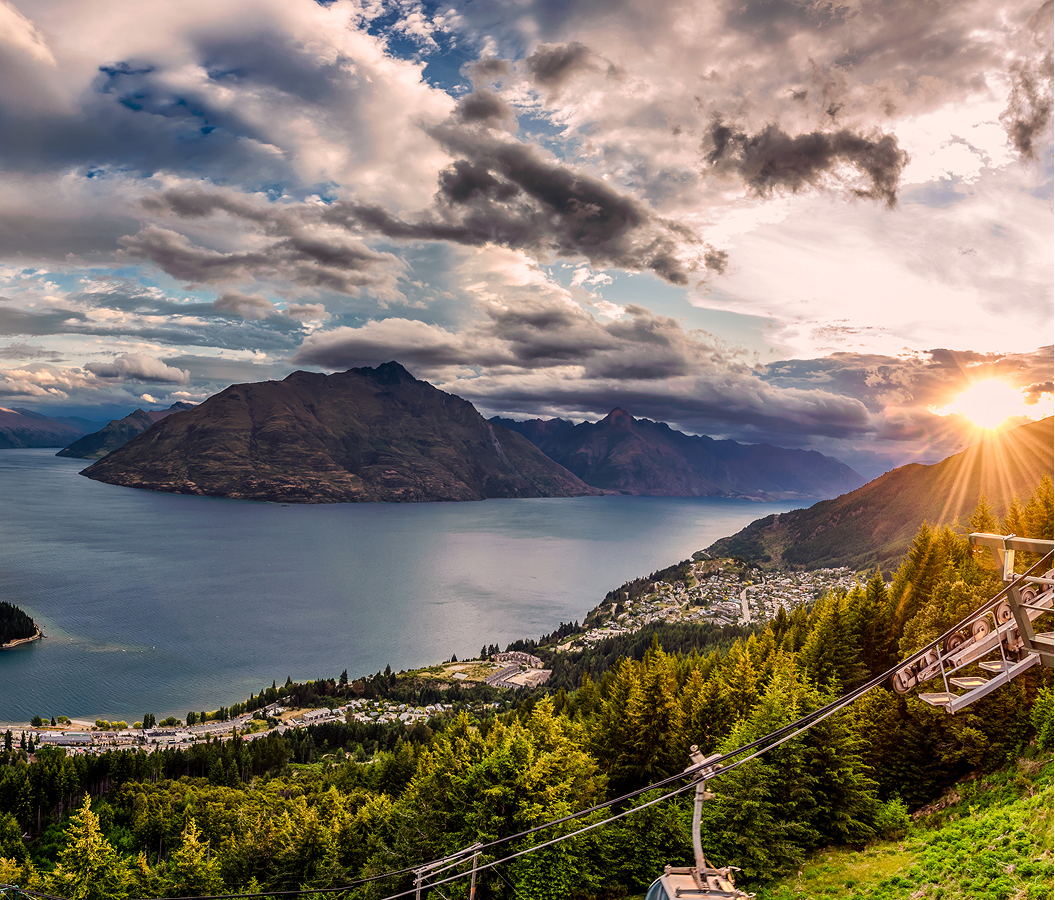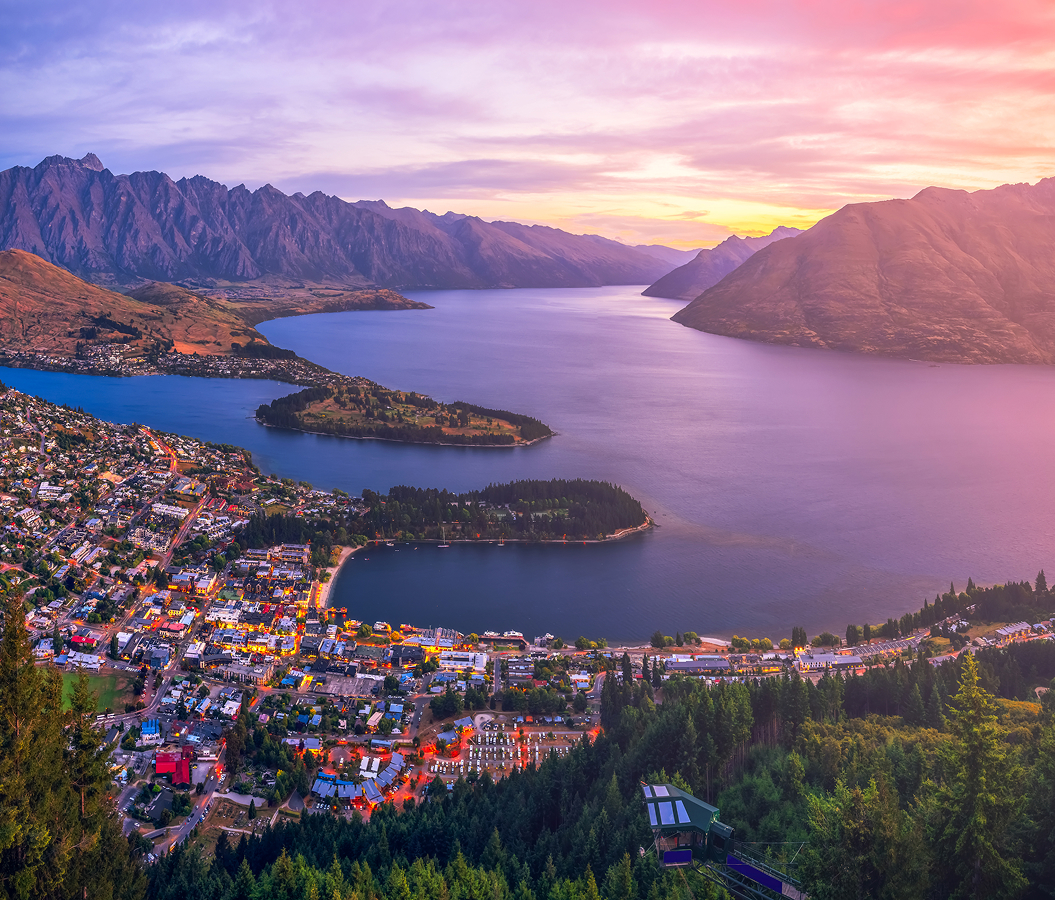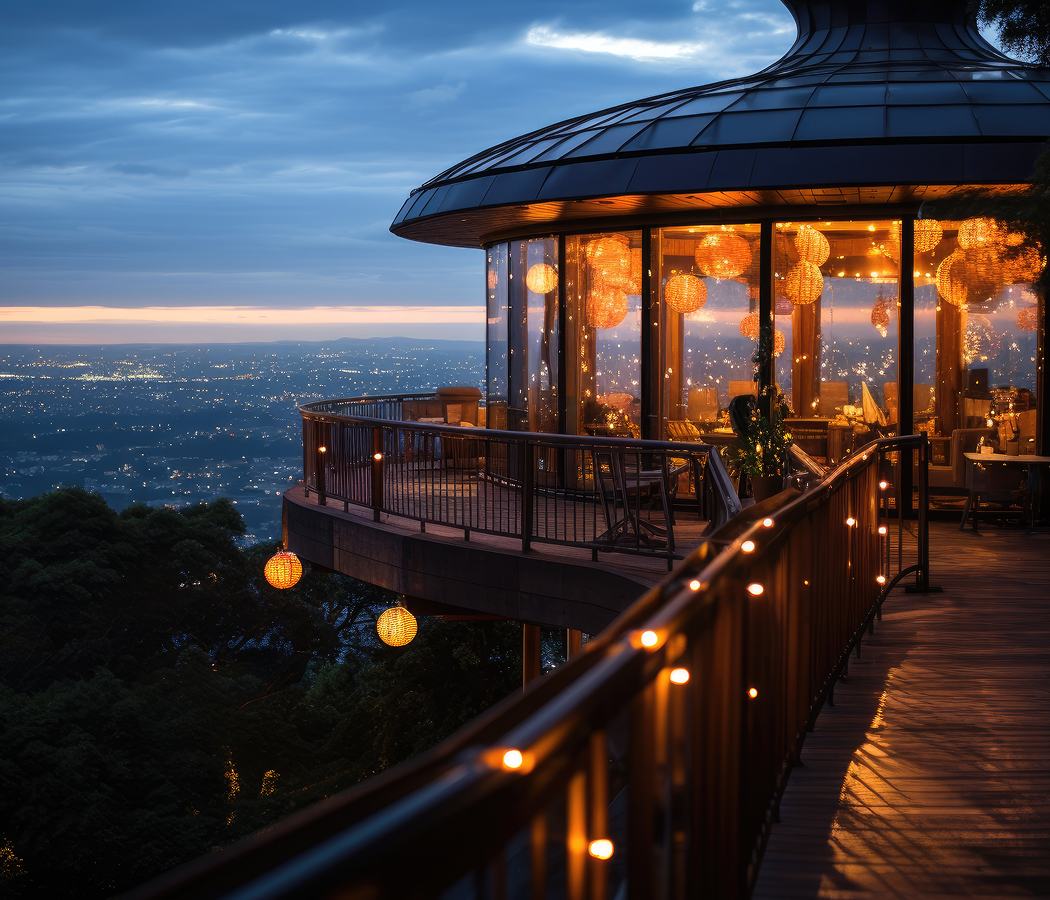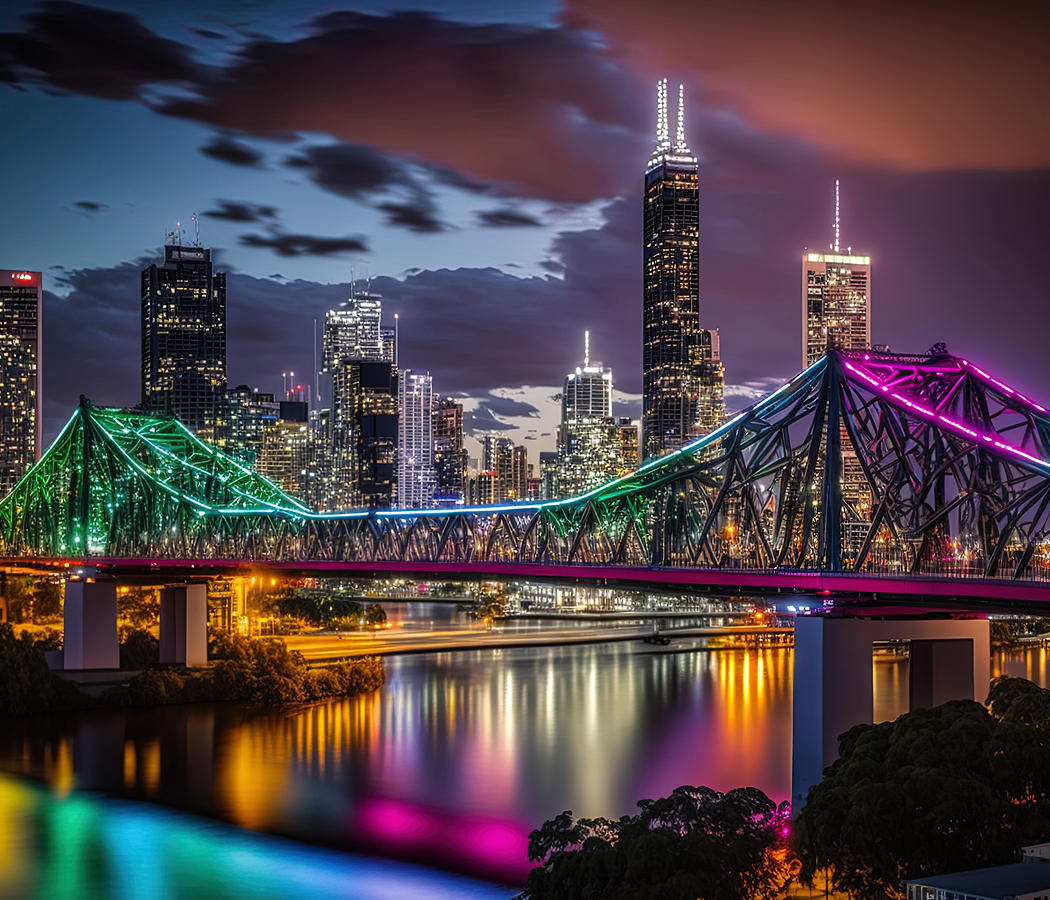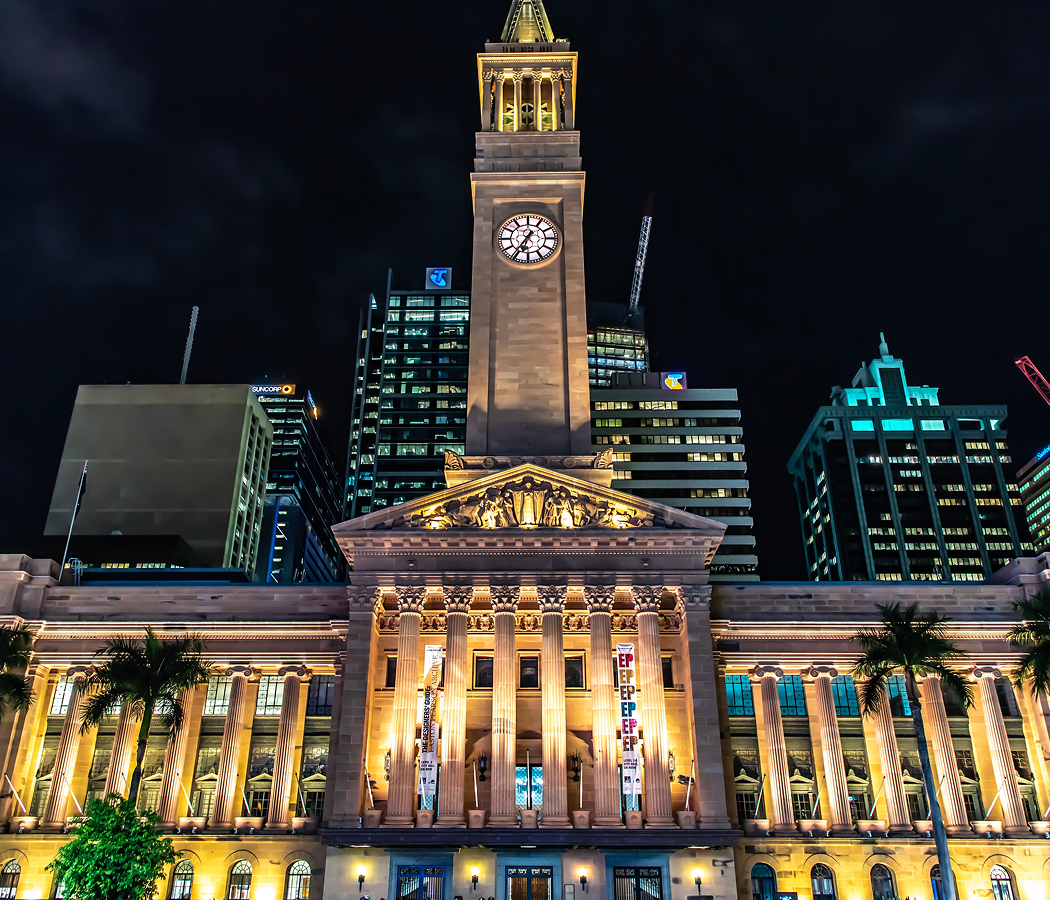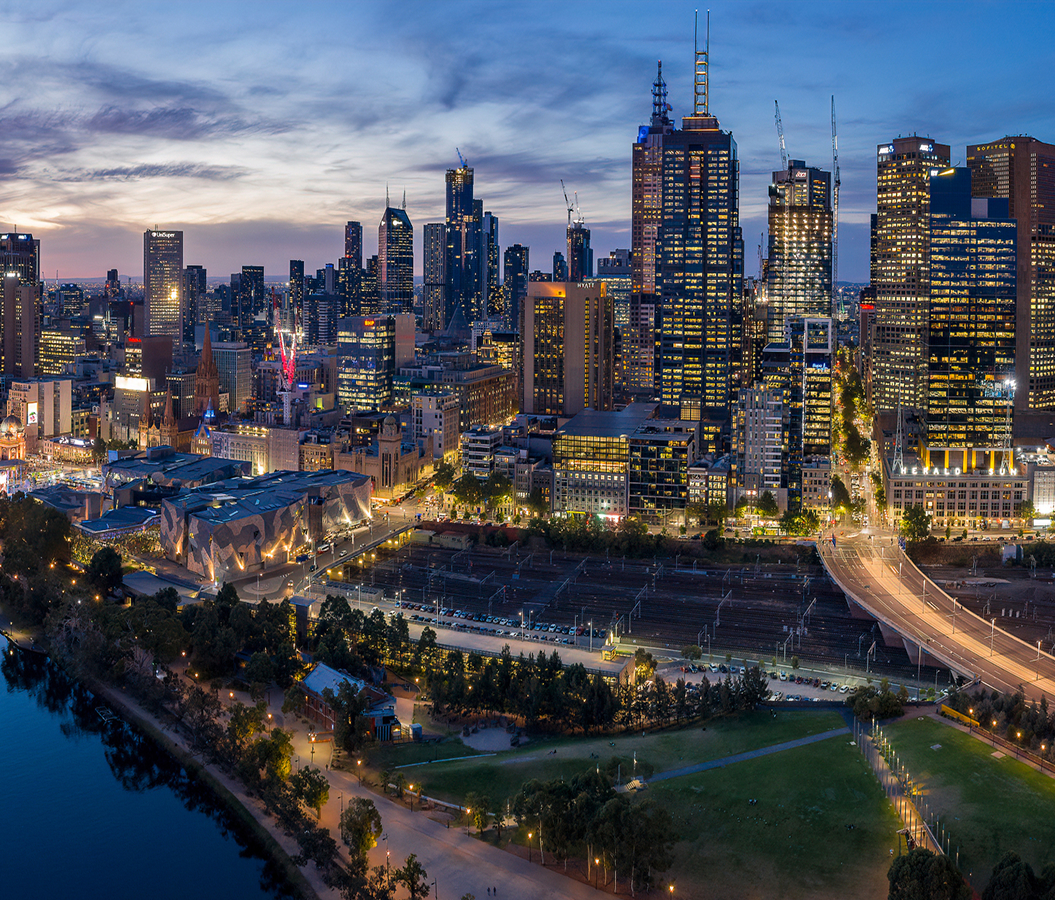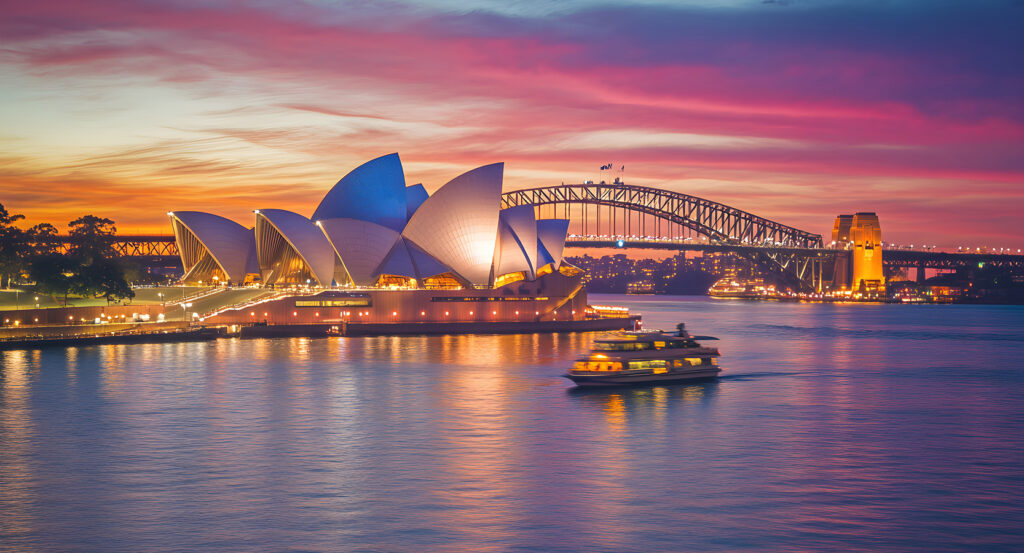
Why you should experience the Sydney Opera House.
The Sydney Opera House isn’t just a performance venue, it’s an icon carved against the sea, a structure so audacious and graceful that it defines the very skyline of Australia.
Perched at Bennelong Point, where the waters of Sydney Harbour sparkle like a curtain of light, the Opera House rises in sculptural sails of white, its geometry a symphony of form and rhythm. Designed by Danish architect Jørn Utzon and completed in 1973 after one of the most ambitious construction stories in modern history, it remains a masterpiece of human imagination. Its shell-like rooftops, shimmering under the sun by day and glowing golden at night, evoke both nautical motion and spiritual uplift, a building that feels alive, breathing with the tides below. Walking up its grand staircase, you sense a shift: city noise fades, the wind sharpens with salt, and the Opera House commands the harbor like a floating cathedral of art. The acoustics inside are legendary, the stages world-renowned, and yet even without entering, the experience is transcendent. To stand before it is to witness the power of architecture as sculpture, culture as vision, and to feel, in some quiet, unspoken way, that you’re in the presence of genius.
What you didn’t know about the Sydney Opera House.
Behind its sculptural beauty lies a tale of innovation, rebellion, and redemption that redefined what architecture could be.
When Jørn Utzon won the design competition in 1957, his concept was deemed nearly impossible to build, a vision of interlocking shells that no engineer could quite explain. But Utzon’s imagination outpaced the skepticism. He drew inspiration from nature, ships, and celestial patterns, eventually resolving the form by slicing segments from a perfect sphere, a revelation that made construction mathematically viable. Despite this breakthrough, political conflict and cost overruns led to Utzon’s resignation before the building’s completion, a tragedy that left the architect in exile from his own masterpiece. It wasn’t until decades later that he was re-honored, his vision restored in spirit through renovations faithful to his design. The Opera House’s 1,056,000 tiles, handmade in Sweden, create the illusion of pure white under the sun yet gleam soft ivory and gold in shadow. Beneath those shells are seven performance venues, including the Concert Hall, with its soaring wooden interiors shaped like the inside of a cello. Each space has its own personality, the Joan Sutherland Theatre for opera and ballet, the Drama Theatre for intimate performances, the Playhouse for experimentation. The building sits upon a vast granite platform extending into the harbor, supported by over 500 concrete piers sunk deep into the seabed. The engineering was so advanced it predated digital modeling, Utzon’s curves were calculated by hand, with slide rules and sheer conviction. In 2007, the Sydney Opera House was inscribed as a UNESCO World Heritage Site, recognized as “a masterpiece of human creative genius.” Yet what makes it truly extraordinary isn’t just its form, it’s the way it fuses the elemental and the emotional, the sea and the stage, the technical and the transcendent.
How to fold the Sydney Opera House into your trip.
No visit to Sydney is complete without feeling the Opera House under your feet, not just seeing it, but experiencing it.
Start your approach from Circular Quay, where ferries, street performers, and city dwellers converge under the open sky. As you walk along the waterfront promenade, the Opera House reveals itself gradually, first distant and mythic, then immense and near, its sails unfurling like petals in motion. Pause at the forecourt and take in the view across the water to the Sydney Harbour Bridge, the two icons locked in perfect conversation. Step inside for a guided tour to uncover the secrets within its walls: the acoustical panels suspended like clouds, the hidden rehearsal rooms, the backstage pathways carved into the concrete skeleton. If possible, book tickets to a performance, whether a symphony, ballet, or experimental theater, each one resonates differently within these sacred halls. Even outside performance hours, the building hums with energy, morning joggers pass by, cafés spill out onto the terrace, and the harbor breeze carries the faint echo of applause. In the evening, the experience transforms completely. As the sun drops behind the bridge, the sails ignite with color from light projections, sometimes art, sometimes activism, always awe-inspiring. The nearby Opera Bar offers one of the most stunning dining views in the world, where you can sip wine as the city glows to life around you. For the full experience, time your visit to coincide with sunset: watch as the last rays gild the tiles, the skyline softens to gold, and the water mirrors it all, a perfect fusion of man and nature. The Sydney Opera House isn’t just a building; it’s a heartbeat, of a nation, of creativity, of the enduring human urge to reach beyond possibility. To stand before it is to understand how art can transcend material, becoming light, air, and emotion made eternal.
Hear it from the Foresyte community.
The whole thing looks like someone dropped origami in the harbor and decided to make it permanent. You show up, snap the shot, and yeah… it’s even better than the postcards make it look.
Where meaningful travel begins.
Start your journey with Foresyte, where the planning is part of the magic.
Discover the experiences that matter most.

